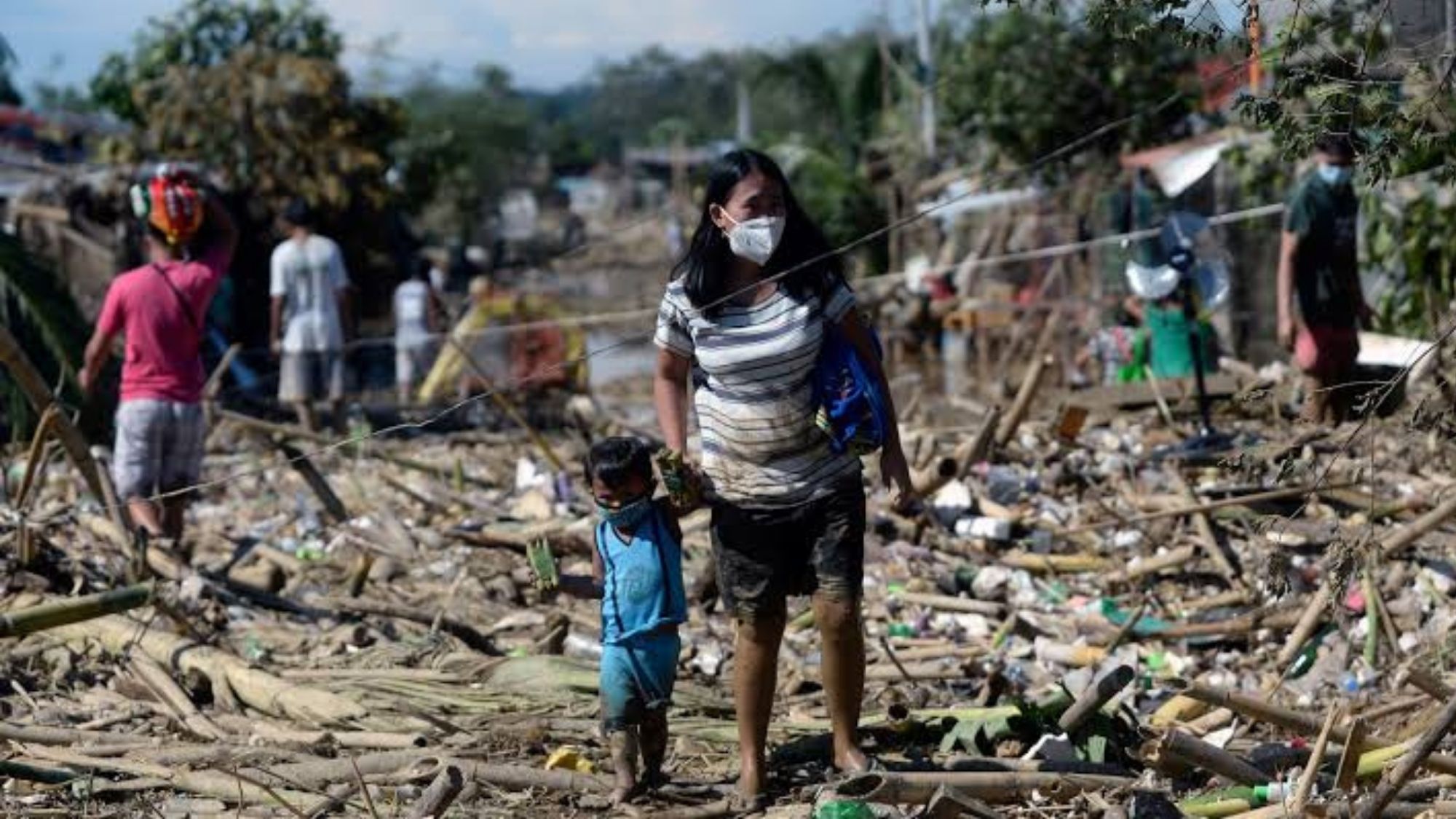The Philippines have been the most affected by disasters and calamities for the past decade, which cause a high displacement rate of Filipinos across the country.
A study released by the Asian Development Bank (ADB) and the Internal Displacement Monitoring Centre (IDMC) said that at least half of the Philippine population was displaced by various disasters like earthquakes, tropical storms, and even volcanic eruptions in just one decade.
The ADB and IDMC research "Disaster Displacement in Asia and the Pacific: A Business Case for Investment in Prevention and Solutions," also added that catastrophes in the country displaced 49.3 percent of Filipinos between 2010 and 2021.
The Philippines accounted for 21.9 percent of the displacements which is more than the contribution of the whole of Central and West Asia, as well as the Pacific combined, Business Mirror reported.
“The Philippines has been the country most affected, as it experiences between 5 and 10 destructive tropical cyclones every year, making it one of the countries most at risk of extreme weather events in the Asia and Pacific region and globally,” the report said.
The most devastating calamity was Typhoon Haiyan in 2013, which displaced 4.1 million people. This accounted for more than a fifth of the Asia Pacific region's 19.7 million disaster displacements that year.
Haiyan survivors collected hundreds of victims lying in body bags on the roadside until the forensic experts can register and bury them in a mass grave outside of Tacloban.
It didn’t only affect the Philippines, but also Palau, China, and Vietnam. Haiyan was deemed as the largest displacement event caused by a storm.
“Its [Haiyan] scale and impacts paved the way for stronger disaster risk reduction mechanisms, including the improvement of early warning systems and evacuation protocols,” the report stated.
Typhoon Rai and Taal eruption
The Philippines’ 3rd largest displacement was caused by a storm in Typhoon Rai which occurred in 2021. It caused the displacement of 3.9 million people from Palau, the Philippines, and Vietnam.
The Philippines becomes the top country with the most internal displacements of 41 million Filipinos caused by storms alone.
Meanwhile, Mount Taal's eruption in 2020 displaced the most people due to a volcanic eruption. A total of 506,000 Filipinos were displaced because of the calamity.
The Philippines also had the second-highest number of internally displaced individuals owing to volcanic eruptions, with 672,000 registered between 2010 and 2021.
Disaster displacements
Southeast Asia accounted for over 31 percent of total disaster displacement documented in the Asia and Pacific region during 2020-2021.
ADB’s Chief of Climate Change and Disaster Risk Management Thermatic group Noelle O’Brien said that
“Disaster displacement is already eroding the development gains in Asia and the Pacific and threatens the long-term prosperity of the region.” “We need to strengthen policies and action on disaster risk management to ensure the region doesn’t regress on its development goals," she added.
Disasters are something that we cannot control directly. We can only prepare for the worst, hence why strengthening policies and actions on disaster risk management is needed to prepare every Filipino in facing the calamities ahead and avoid any higher displacements, especially since the Philippines is considered to be in one of the Pacific Ring of Fire where a string of volcanoes and seismic activities mostly occur.
Meanwhile, IDMC Director Alexandra Bilak said that disasters are costing Asia and the Pacific hundreds of billions of dollars in recovering from the aftermaths.
“However, the ultimate cost still lies in the millions of lives that are affected by unmitigated disaster displacement every year.” She added.
The 225 million displacements in Asia and the Pacific include 5 million in South Asia from Cyclone Amphan in 2020, 2.6 million in Nepal after the Gorka earthquake in 2015 and 15.5 million in the People's Republic of China from floods in 2010.
However, ADB added that the report does not include the estimated hundreds of thousands of people displaced in Pakistan due to the ongoing severe flooding that began in June.
Climate Change
The report discussed that climate change has a role in disaster displacement and is clearly becoming more visible as years pass by. It is expected that as the frequency and intensity of hazards change, so will the impact on food insecurity and water scarcity.
The report also investigates the social and economic impacts, and what are the steps needed to further prevent and prepare for disaster displacement. It examines the effects of floods, storms, earthquakes, tsunamis, and volcanic activity on each Asian and Pacific subregion, as well as how disaster displacement disproportionately affects vulnerable groups such as women, children, and the elderly.
Additionally, the study outlines the Sendai Framework for Disaster Risk Reduction as a gauge for measures to address both natural and man-made hazards, emphasizing the need for political, technical, and financial support in a regional coordinated effort to reduce the impact of disasters on lives, livelihoods, and economies.
All told, it is important to study and analyze what actions are required to further prevent high displacements and what Filipinos need to do and prepare for future calamities.
Tags: #Disasters, #Calamities, #ClimateChange, #Displacement
